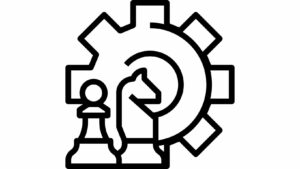The strength of an organization does not solely rely on its financial health or technological advancements but significantly on the cognitive and emotional competencies of its leaders. The hallmark of exceptional leadership transcends traditional management skills, venturing into the realm of self-mastery, learning agility, resilience, and various forms of thinking such as logical, critical, creative, strategic, systems, and design thinking. Investing in these areas not only fosters a culture of innovation and adaptability but also ensures sustainable success in the face of adversity.
The Importance of Cognitive and Emotional Competencies
 Self-Mastery
Self-Mastery
Self-mastery is the bedrock of effective leadership. It denotes a leader’s ability to control their impulses, emotions, and behaviors, aligning them with their long-term values and goals. Leaders proficient in self-mastery can navigate stressful situations with grace, inspire confidence in their teams, and make decisions that are not clouded by fleeting emotions.
Related Programs: Personal Mastery | Personal Leadership
 Learning Agility
Learning Agility
In this VUCA world, the capacity to learn from experiences and apply those lessons to new, never-before-seen scenarios known as learning agility has never been more crucial. Leaders with high learning agility can swiftly adapt their strategies and operations to meet the demands of an ever-changing market landscape.
Related Programs: Coachability
 Resilience
Resilience
Resilience is the ability to bounce back from setbacks, adapt, and move forward in the face of challenges. Resilient leaders maintain a positive attitude, even during tough times, and see failures as opportunities for growth and learning. This trait is infectious, fostering a resilient organizational culture. Resilient leaders are not quitters, they find ways to overcome challenges and inspire their team to do the same. Now, who doesn’t want that?
Related Programs: Resilience Building
 Logical, Critical, and Creative Thinking
Logical, Critical, and Creative Thinking
Leadership requires a balance between logical, critical, and creative thinking. Logical thinking helps in structuring problems and solutions in a coherent, step-by-step manner. Critical thinking involves analyzing information and arguments critically and objectively. Meanwhile, creative thinking encourages innovation by looking beyond the obvious to find novel solutions.
Related Programs: Logical, Critical, and Creative Thinking Skills | Creativity & Innovation
 Strategic, Systems, and Design Thinking
Strategic, Systems, and Design Thinking
Strategic thinking involves a long-term perspective, planning, and foresight. Systems thinking enables leaders to understand the complex interrelationships within an organization and its environment. Design thinking focuses on empathizing with users, ideating, prototyping, and testing solutions to problems. Together, these thinking styles empower leaders to navigate complexity, anticipate future trends, and innovate.
Related Programs: Strategic Thinking | Systems Thinking | Design Thinking
Consequences of Underdeveloped Competencies
When these competencies are underdeveloped, leaders may struggle to adapt to change, make poor decisions under pressure, or fail to inspire and motivate their teams. This can lead to decreased employee morale, lower productivity, and ultimately, a decline in organizational performance. Additionally, a lack of resilience and learning agility can make it difficult for organizations to recover from setbacks or innovate effectively.
Benefits of Strong Leadership Competencies
Investing in the development of these leadership competencies yields numerous benefits. Leaders who excel in these areas are better equipped to handle the complexities of the modern business world. They can lead their teams through uncertainty, foster a culture of continuous improvement and innovation, and drive organizational success. Moreover, these leaders can attract and retain top talent, as employees are more likely to feel valued and engaged in an environment that promotes growth and learning.
Leaders with strong cognitive and emotional competencies can also better manage their own and their team’s stress, leading to healthier, more productive work environments. Their ability to think critically, creatively, and strategically enables them to identify opportunities for growth and innovation, keeping their organizations competitive in a fast-paced world.
Maximizing Leadership Abilities
Organizations can maximize these leadership abilities through targeted training programs, coaching, and mentorship. Encouraging a culture of continuous learning, providing opportunities for leaders to face new challenges, and fostering open communication can also help in developing these competencies. Regular feedback and reflection are essential for leaders to understand their strengths and areas for improvement, allowing them to grow and adapt their leadership style as needed.
The investment in strengthening the minds of your leaders is an investment in the future of your organization. By prioritizing the development of key leadership competencies such as self-mastery, learning agility, resilience, and various forms of thinking, organizations can navigate the complexities of the modern business environment with confidence and agility. The result is a resilient, innovative, and successful organization, poised for long-term success in an ever-changing world.
Investing in your leaders’ cognitive and emotional competencies is not just a choice—it’s a necessity for long-term success. Equip your team with the skills they need to navigate challenges, drive innovation, and lead with confidence.
🚀 Ready to build a stronger leadership team?
Explore our customized training programs and start developing the leaders your organization needs.
📩 Contact us today to learn how we can help: Call 84599603 or email us at information@exeqserve.com
#LeadershipExcellence #InvestInYourLeaders #ExeQserve











